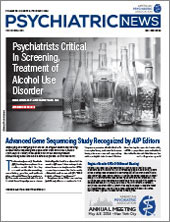Long-term use of medications for attention-deficit/hyperactivity disorder (ADHD) is associated with a small but statistically significant increase in risk for cardiovascular disease (CVD), notably hypertension and arterial disease, according to a
study in
JAMA Psychiatry.
Zheng Chang, Ph.D., principal researcher in the Department of Medical Epidemiology and Biostatistics at the Karolinska Institutet in Stockholm, and colleagues examined data from 278,027 Swedish individuals aged 6 to 64 years who had an incident ADHD diagnosis or ADHD medication dispensation between 2007 and 2020. They identified 10,388 patients with CVD and matched them to 51,672 controls without CVD. The researchers followed the patients, who were a median age of 35 years, for up to 14 years, with a median length of follow-up of 4.1 years.
Overall, individuals who took ADHD medication for more than five years had a 23% higher risk of CVD compared with those who did not take the medication. The increased risk appeared to peak at 27% between three and five years of medication use.
Those who took ADHD medications for three to five years and more than five years had 72% and 80% increased risk of hypertension, respectively. Those who took ADHD medications for three to five years and more than five years had 65% increased risk and 49% increased risk of arterial disease, respectively. However, risk did not appear to increase for arrhythmias, cerebrovascular disease, heart failure, ischemic heart disease, or thromboembolic disease.
Compared with taking no ADHD medications, taking methylphenidate for three to five years or more than five years was associated with 20% increased risk and 19% increased risk of CVD, respectively. Taking lisdexamfetamine for three to five years or more than five years was associated with 23% increased risk and 17% increased risk of CVD, respectively. However, those who took atomoxetine had only 7% increased risk of CVD, and only for the first year of use. The increased risk for CVD occurred only above an average daily dose of 45 mg for either methylphenidate and lisdexamfetamine and 120 mg for atomoxetine.
“The use of ADHD medications has increased substantially in many countries during the past decades. Cardiovascular safety is one of the most important safety concerns of these drugs,” Chang told Psychiatric News.
“The increased cardiovascular risk, together with other safety concerns [such as the individual’s risk profile and family history of cardiovascular diseases], should be carefully weighed against the established benefits, on a case-by-case basis,” Chang added, noting that ADHD itself is associated with a higher risk of CVD.
In an
accompanying editorial, Samuele Cortese, M.D., Ph.D., a professor of child and adolescent psychiatry at the University of Southampton, United Kingdom, and Cristiano Fava, M.D., Ph.D., an associate professor in the Department of Medicine, General Medicine and Hypertension Unit at the University of Verona, Italy, stressed the importance of considering clinical guidelines while also weighing the risk-benefit ratios of ADHD medications for different patients.
“[S]everal guidelines recommend stimulants as first-line treatment over nonstimulants, considering the balance between efficacy and overall tolerability and safety. Therefore, recommending nonstimulants as first-line treatment solely based on cardiovascular risk would not reflect the full body of evidence on ADHD medications,” they wrote.
They added that the risk-benefit ratio may be lower in individuals with preexisting cardiovascular conditions, but that more evidence and precise recommendations are needed in relation to the treatment of individuals with those conditions and ADHD.
“In summary, the study … should remind us that clinical decision-making is often based on tricky trade-offs that should be considered at the individual patient level, rather than straightforward one-size-fits-all recommendations,” they wrote.
The study was supported by the Swedish Research Council for Health, Working Life, and Welfare and the European Union’s Horizon 2020 research and innovation program. ■

